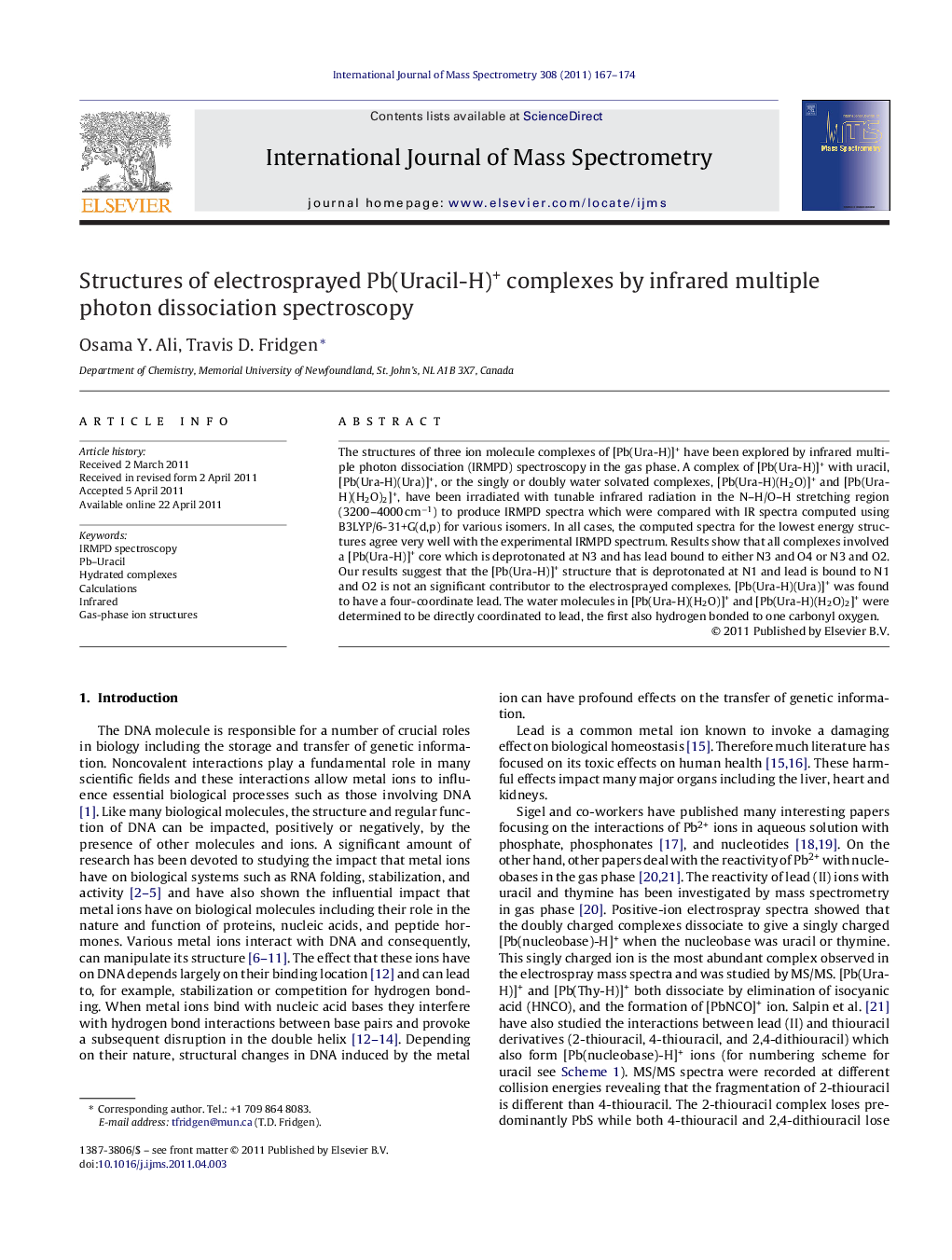| Article ID | Journal | Published Year | Pages | File Type |
|---|---|---|---|---|
| 1192867 | International Journal of Mass Spectrometry | 2011 | 8 Pages |
The structures of three ion molecule complexes of [Pb(Ura-H)]+ have been explored by infrared multiple photon dissociation (IRMPD) spectroscopy in the gas phase. A complex of [Pb(Ura-H)]+ with uracil, [Pb(Ura-H)(Ura)]+, or the singly or doubly water solvated complexes, [Pb(Ura-H)(H2O)]+ and [Pb(Ura-H)(H2O)2]+, have been irradiated with tunable infrared radiation in the N–H/O–H stretching region (3200–4000 cm−1) to produce IRMPD spectra which were compared with IR spectra computed using B3LYP/6-31+G(d,p) for various isomers. In all cases, the computed spectra for the lowest energy structures agree very well with the experimental IRMPD spectrum. Results show that all complexes involved a [Pb(Ura-H)]+ core which is deprotonated at N3 and has lead bound to either N3 and O4 or N3 and O2. Our results suggest that the [Pb(Ura-H)]+ structure that is deprotonated at N1 and lead is bound to N1 and O2 is not an significant contributor to the electrosprayed complexes. [Pb(Ura-H)(Ura)]+ was found to have a four-coordinate lead. The water molecules in [Pb(Ura-H)(H2O)]+ and [Pb(Ura-H)(H2O)2]+ were determined to be directly coordinated to lead, the first also hydrogen bonded to one carbonyl oxygen.
Graphical abstractFigure optionsDownload full-size imageDownload high-quality image (119 K)Download as PowerPoint slideHighlights► The IRMPD spectra of three complexes with a [Pb(Ura-H)]+, core have been recorded in the O-H/N-H stretch region. ► The computed spectra for the lowest energy structures agree very well with the experimental IRMPD spectrum. ► The [Pb(Ura-H)]+ core is deprotonated at N3 and has lead bound to either N3 and O4 or N3 and O2. ► The [Pb(Ura-H)]+ structure deprotonated at N1 with lead bound to N1 and O2 is not observed. ► [Pb(Ura-H)(Ura)]+ was found to have four-coordinate lead. ► Water in hydrated complexes are directly coordinated to lead, the first also intramolecularly hydrogen bonded.
